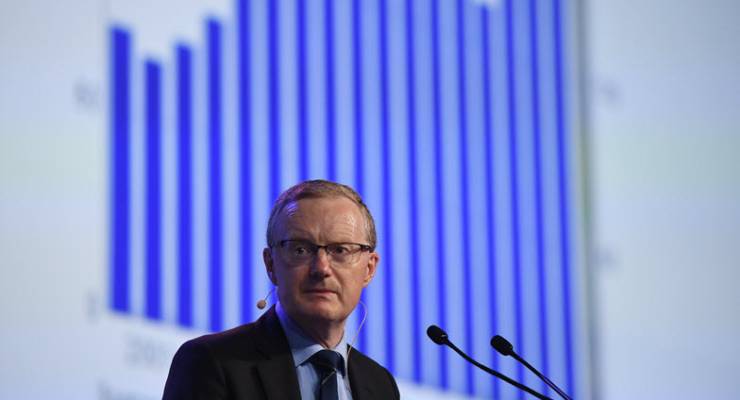
Recent household finance data paints a picture of an economy less vibrant than the government would have us believe, though better than the doomsayers will admit — and one the Reserve Bank will continue to fret about.
For the adults in the room at the RBA, high household debt and low wages growth remain the central domestic issues despite the bank’s expectations of a gradual (its favoured word) improvement in wages growth. As governor Philip Lowe pointed out in yesterday’s post-meeting statement, “one continuing source of uncertainty is the outlook for household consumption. Growth in household income remains low and debt levels are high. The drought has led to difficult conditions in parts of the farm sector.”
The stretched shape of household finances was underlined in the June quarter national accounts for finance and wealth, issued late last week by the Australian Bureau of Statistics (ABS). These are now very historical figures, but illustrate the kinds of challenges households are facing.
In the June quarter, there was a considerable improvement in the finances of households compared to the March quarter — but mainly because the latter was very weak. Household net worth was up 1.0% compared to a 0.6% decline in March. The increase was driven by financial assets, which contributed 1.35 percentage points to growth while land and dwellings, and liabilities, detracted 0.08 and 0.29 percentage points from growth, respectively. Net worth per person increased 0.6% to $414,463.
That increase in financial assets was fueled by a 7.6% jump in the ASX 200, after the 5.6% slide in the March quarter, the worst quarterly performance since the GFC. In contrast, house prices fell 0.7% in both quarters. In fact it is clear the wealth effect from rising house prices has been well and truly reversed this year and is now the biggest threat to household finances and the large debt overhang. The ABS said the land and dwellings loss was $50.7 billion, which came after a $69.2 billion fall in the March quarter, so we’re collectively down $119.9 billion in the first half of the year.
There are some more arcane indicators that aren’t too rosy either. According to the ABS, “the interest payable to income ratio at June quarter 2018 increased to 11.0%, from the March quarter 2018 ratio of 10.7%” while “the mortgage debt to residential land and dwellings ratio rose to 26.9% from the March quarter 2018 result of 26.5%, indicating that mortgage debt grew faster than the value of residential real estate owned by households”.
Another indicator, the debt to liquid assets ratio increased slightly from 114.8% to 114.9%. “Household debts have exceeded 100% of liquid assets since September 2002, peaking at 129.8% in June 2011,” the bureau noted. “Although the ratio continues to fall from this high, it remains at an elevated level, indicating households may not be able to hurriedly extinguish debt if required.”
The overall picture of the accounts is that the sharemarket is the main source of any wealth effect at the moment for most households, while stagnant incomes and flat or slightly declining property prices pull it down.
Looking “ahead”, the ASX 200 only managed a rise of 0.2% in the September quarter and capital city house prices fell 1.5% in the three months to September according to the monthly Corelogic report. That means there’ll be no sharemarket boost to offset flat incomes and property prices. So sometime in late December, just after the pre-election Mid-Year Economic and Fiscal Outlook — and maybe a mini-budget from the Morrison government — the September quarter finance and wealth accounts will be released. There is every likelihood that they will show another quarter of weakening household finances — a development that will add to the worries the Reserve Bank continues to have about the high level of household debt and sluggish wages growth.









“The ABS said the land and dwellings loss was $50.7 billion, which came after a $69.2 billion fall in the March quarter, so we’re collectively down $119.9 billion in the first half of the year.”
Although a great headline figure, boy that’s a big number, it’s probably better not to publish it. Like stock market falls that ” wipe billions from the exchange” they aren’t actually real figures in any meaningful way. Unless you’re selling and not going to buy you won’t really lose any money.
The benefit of house price drops is that investors aren’t getting windfall gains for doing nothing at taxpayers expense, and people with fat mortgages will realise that they are exposed and perhaps do something about it.
“The Wealth Effect” from house price rises and high growth superannuation returns is a trap that both the uninitiated and the initiated make regularly. Howard and Costello thought that a booming economy powered by credit card debt due to the wealth effect was a good thing, and Treasury wasn’t exactly sounding the klaxons.
Not sure which part of the article gives rise to this; “though better than the doomsayers will admit”.
What’s that? Were in shit creek but only up to our chests! Great.